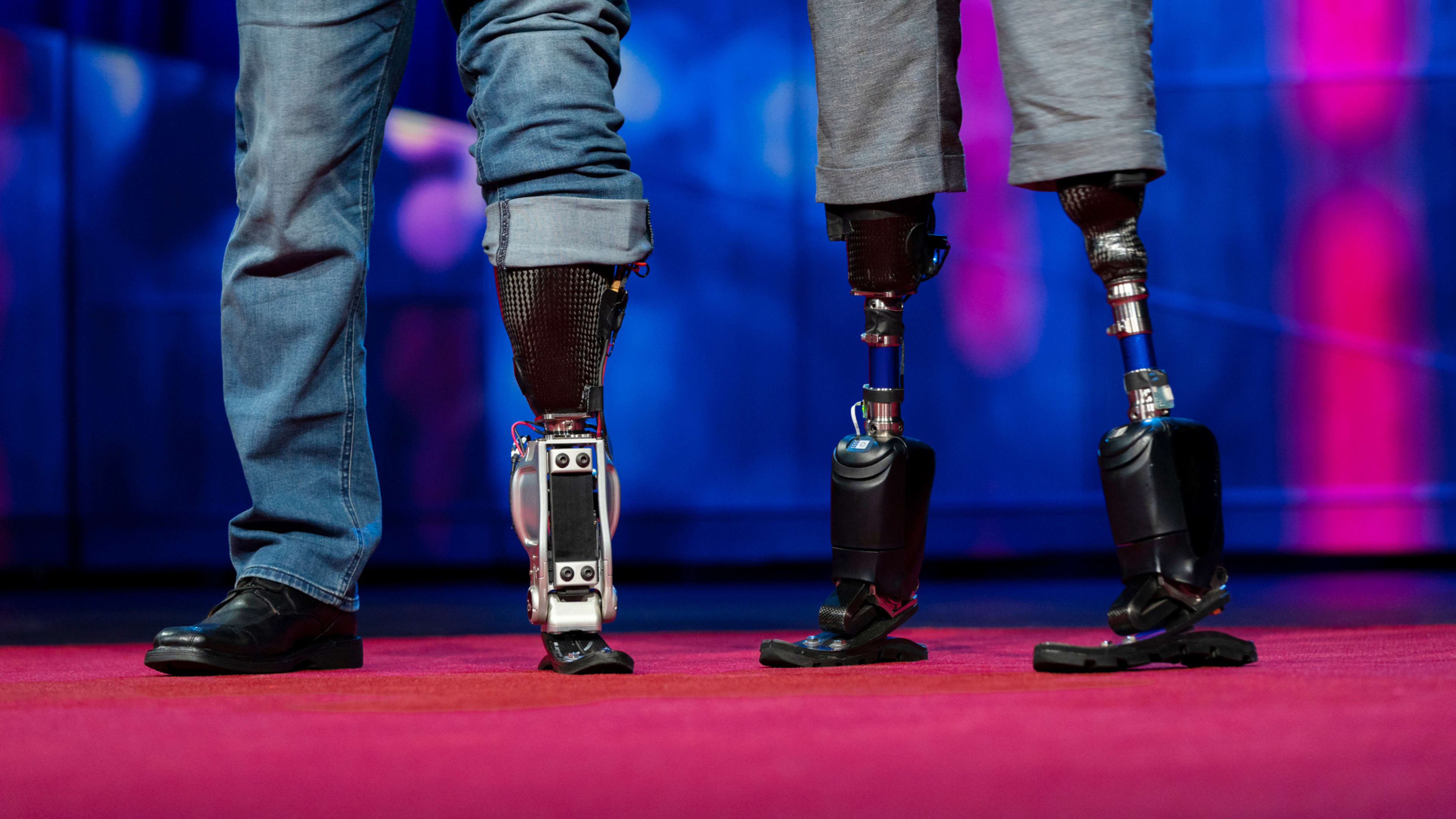In 1992, Hugh Herr, now head of the Biomechatronics Group at MIT Media Lab, had both of his legs amputated below the knees after sustaining frostbite during a mountain climbing accident. “I”m basically a bunch of nuts and bolts from the knees down,” Herr says, demonstrating his prosthetic legs on the stage at TED 2018 in Vancouver, “but I can skip, dance, and run.”
Herr’s team at MIT focuses on building prosthetic limbs that respond to neural commands with the flexibility and speed of regular limbs. Around 24 sensors and six microprocessors pick up neural signals from Herr’s central nervous system when he thinks about moving his legs. They transmit those signals to the prosthetics, which move accordingly. But despite this remarkable connectivity between man and machine, it’s not a complete fusion. “When I touch my synthetic limbs, I don’t experience normal touch and movement sensations,” Herr says. In order to know his neural commands worked, he has to look and actually see his foot hit the ground–he can’t feel it.

His team, however, is working on a new type of limb that would receive not only commands, but sensations, from the central nervous system. This principle, which Herr calls neuro-embodied design, involves extending the human nervous system into synthetic body parts.
Since the Civil War, when limbs are amputated, doctors have generally truncated the tendons and nerve endings, which minimizes sensation and often leads to the “phantom limb” feeling experienced by many amputees. But in a new process Herr’s team pioneered at MIT, doctors leave the tendons and nerve endings intact so they can continue to feed sensations down past where the human leg ends and the prosthetic begins.
Last year, a fellow mountain climber and old friend of Herr’s, Jim Ewing, became the first patient to undergo the new amputation process and get fitted with a cyborg-like synthetic limb.
While climbing a sheer cliff face in the Cayman Islands a couple years ago, Ewing fell 50 feet. His rope failed to catch him, and many of his bones broke. “After his accident, he dreamed of returning to his chosen sport of mountain climbing,” Herr says. And as his tragedy coincided with the development of Herr’s new technology, Ewing became the test subject.
And the test was successful. Herr showed footage of Ewing navigating a set of stairs in the lab, and he was able to find the next step just via the sensations of his prosthetic foot–he didn’t need to look down. “Because [Ewing’s] central nervous system is receiving the signals, it knows how to control the synthetic limb in a natural way,” Herr says.
After having the prosthetic attached, Ewing returned to the Cayman Islands and re-scaled the same wall where he fell, becoming the first person to rock climb with a synthetic limb. NeuroEmbodied Design, Herr says, will fundamentally change the relationship between people and prosthetics.
Recognize your brand’s excellence by applying to this year’s Brands That Matter Awards before the early-rate deadline, May 3.
